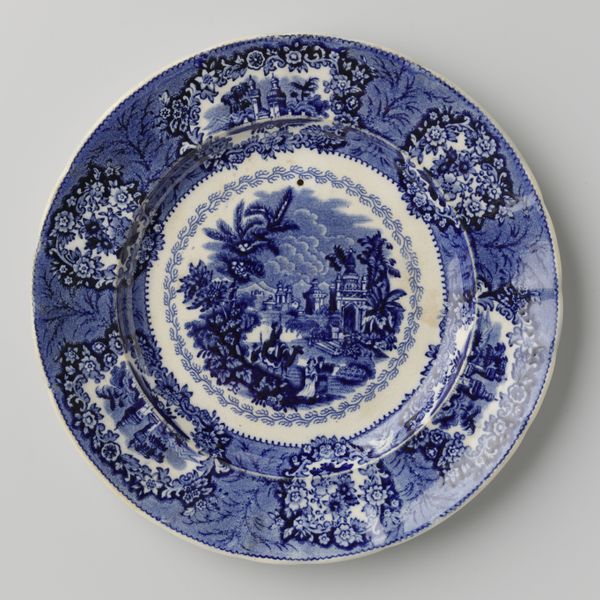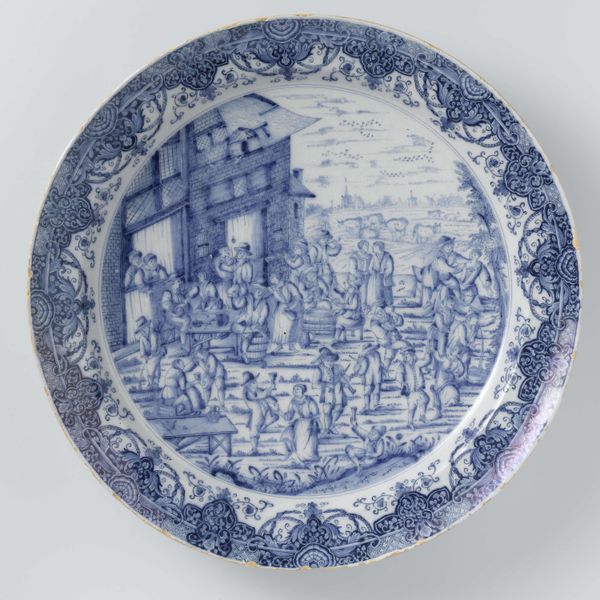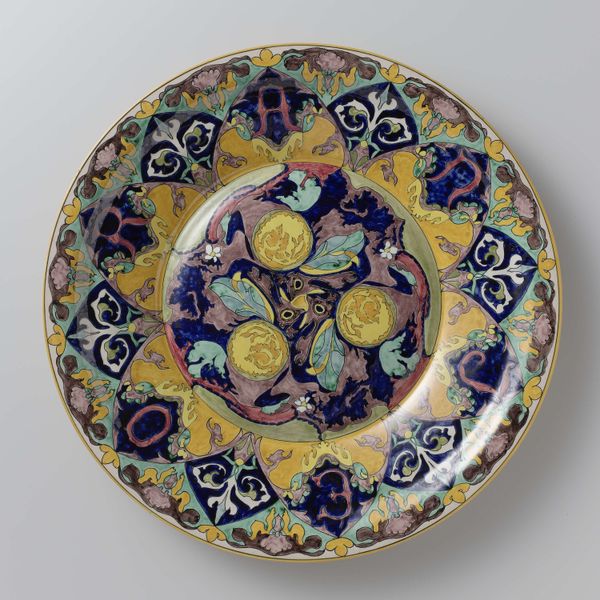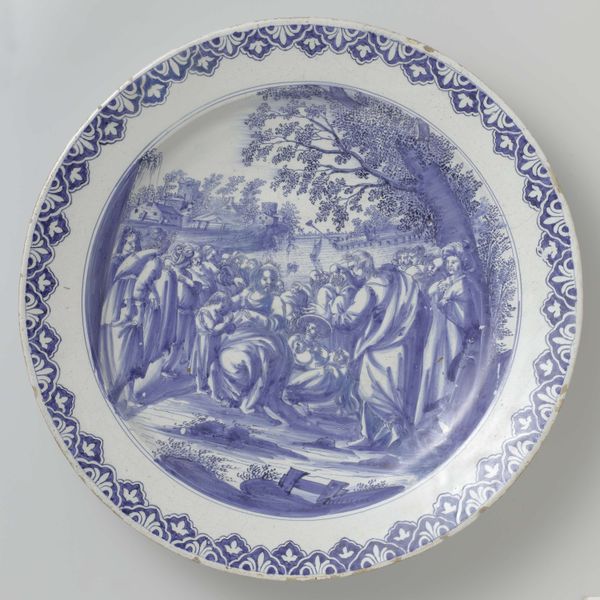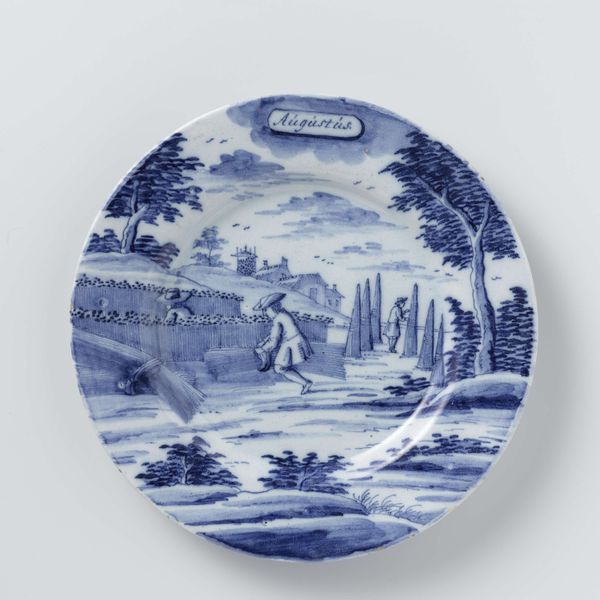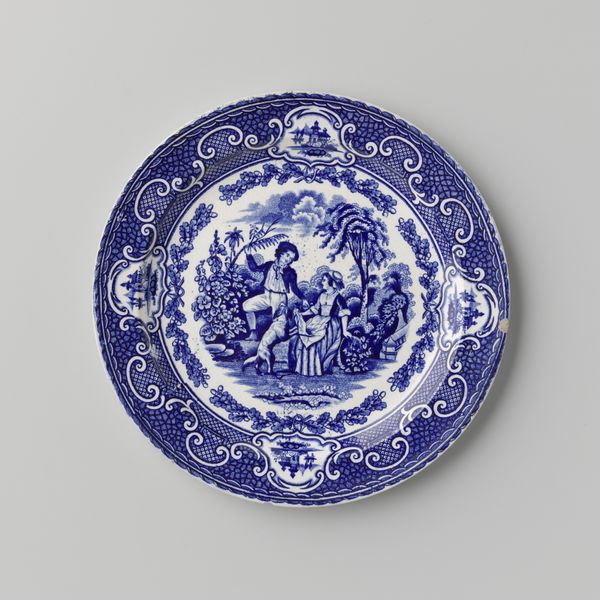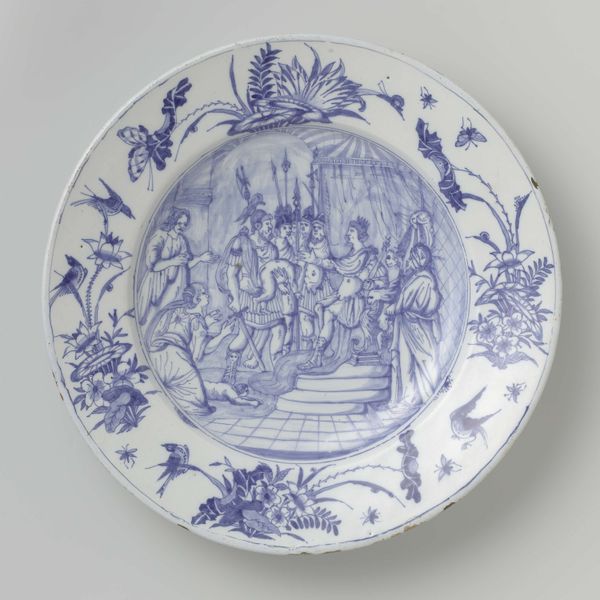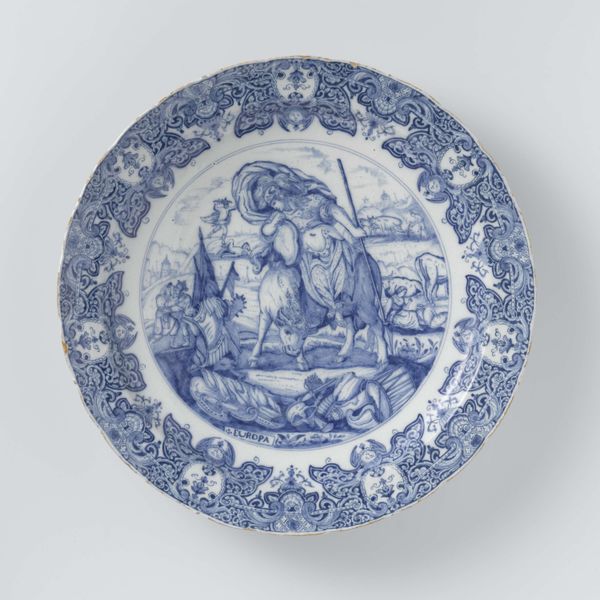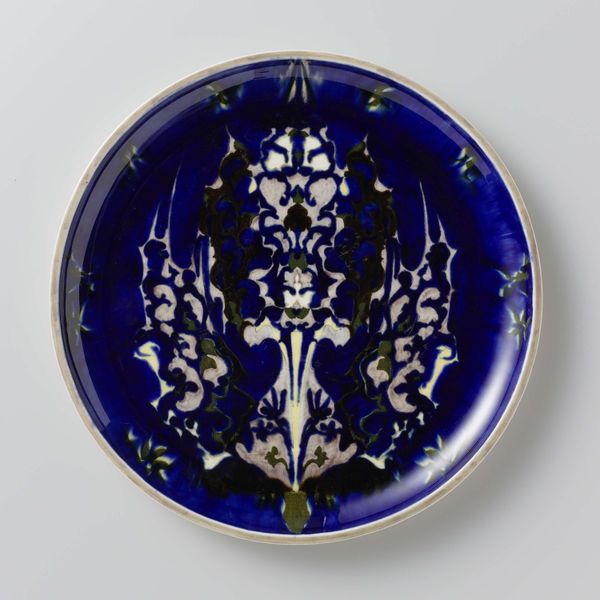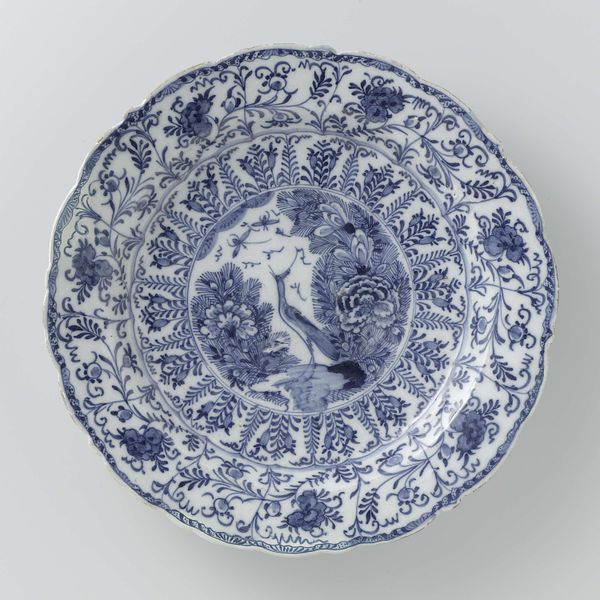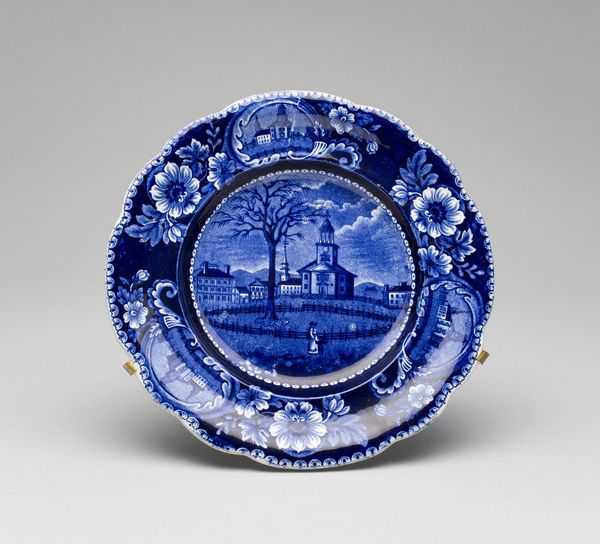
ceramic
#
allegory
#
landscape
#
ceramic
#
figuration
#
11_renaissance
#
ceramic
#
italian-renaissance
Dimensions: diameter 28.4 cm, diameter 9.0 cm
Copyright: Rijks Museum: Open Domain
Curator: What strikes you first about this ceramic plate from possibly 1521 to 1526, depicting a blacksmith and Cupid in a landscape, made by Piero Bergantini? Editor: The cobalt blue immediately creates a sense of depth and richness, especially in contrast to the more subdued tones in the plate’s central scene. It’s interesting to see such a functional item elevated to an artistic level. Curator: It's fascinating to consider the allegorical implications – a blacksmith representing perhaps labor, or the creation of things, coupled with Cupid, embodying desire. Their placement in a landscape further emphasizes this relationship. It invites reflections on what these symbolic figures meant to people of that time. Editor: Absolutely, but I’m also interested in how it was actually made. Imagine the technical skill needed to paint those detailed scenes and intricate borders onto the ceramic surface. The materials themselves - where did they come from, and what was involved in processing the clay, the pigments, and finally firing the piece? Curator: The persistence of visual languages and symbols across eras is compelling. Notice how even a secularized, romanticized Cupid finds its origins in much older traditions related to desire and creation. A continuous conversation through images over time. Editor: True, but let's not overlook the economics involved! Someone commissioned this; someone else acquired and used it. Was it for dining, or was it meant to be displayed? Such factors reveal insights into society at that time. These choices always point to labor relationships, consumption, and patterns of trade. Curator: Reflecting on this ceramic plate, it brings forth thoughts on the convergence of the terrestrial and the allegorical, presented with precision and a beautiful design. Editor: Indeed. From the skilled craftsmanship of the ceramic production to the ways it was circulated and consumed, each aspect sheds light on the intricate social fabric of the Italian Renaissance.
Comments
No comments
Be the first to comment and join the conversation on the ultimate creative platform.
